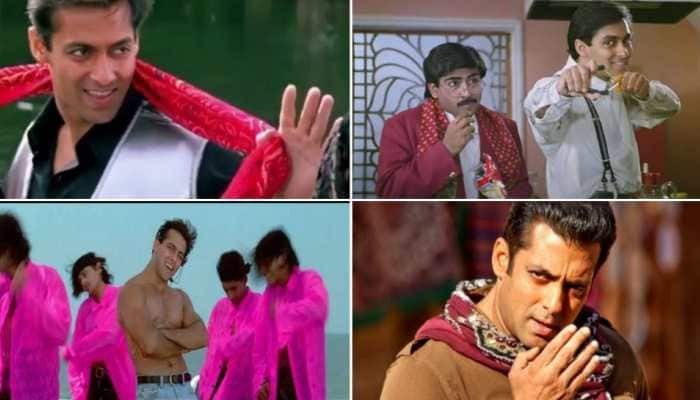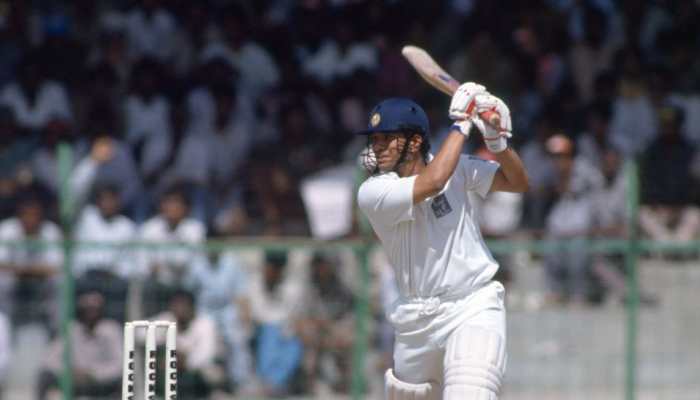Here’s how pranayama techniques can help in relieving stress
Conscious breathing can work wonders if done correctly. And pranayama does exactly that.
- Conscious breathing can work wonders if done correctly. And pranayama does exactly that.
Trending Photos
)
Most of us do not realize that we already have a magic elixir within our body that can help us get relief from stress and anxiety. Think back to the last time you were stressed and the advice you may have received from your colleague, friend, or family member.
“Take deep breaths and calm down” or “Look at me and follow my breathing”.
Conscious breathing can work wonders if done correctly. And pranayama does exactly that.
Practicing pranayama means you are taking deep controlled breathes while being aware of the movement. With the different techniques of pranayama, you are controlling and giving way for the prana energy to flow freely and efficiently.
How pranayama relives stress and anxiety?
As already stated, pranayama is a controlled and conscious breathing technique. It can help you combat anxiety and stress by not only making you aware of your breathing but from where your breath is originating.
Whenever you are under stress, your breathing becomes fast and shallow. One reason for this is that your sympathetic nervous system (fight or flight mode) gets activated.
In cases of shallow breathing, your blood is doesn’t get oxygenated sufficiently and there may also be an imbalance of oxygen and carbon dioxide in your body. These factors combined can lead to the trigger of stress signals to the brain.
If you practice pranayama, you will be taking deep breaths either from the belly or the lungs. This awareness of the breath helps in activating the Parasympathetic Nervous System (rest and digest mode) that aids in calming down your mind.
When you take deep breaths or diaphragmic breaths, the lengths of inhales and exhales are often the same, hence a balance of oxygen and carbon dioxide gest established. Through this, your heartbeat and blood pressure also come back to their normal pace. The respiratory and digestive system starts to function normally as well.
Thus, within a span of a few minutes, you will feel less uneasy, calm, and in control of your emotions.
5 Pranayama Techniques to Cope with Anxiety and Stress
Seeing the effects pranayam has on relieving stress and anxiety, here are 5 pranayama techniques you can practice.
Anulom-Vilom (Alternate Nostril Breathing)
Practicing anulom vilom pranayama helps balance the right and left hemispheres of the brain. This is another pranayama that is famous for reducing early symptoms of stress, anxiety, depression, and tension. It improves memory and strengthens the immune system. You will also be able to efficiently manage your anger and improve your quality of sleep.
● Sit in a comfortable pose with a straight spine.
● On your right hand, bend the index and middle finger so that the fingertips touch the base of the fingers. The rest of the fingers stay straight.
● On the left hand, you can make a mudra of your choice. The most preferred is Gyan Mudra.
● Close the right nostril by the thumb and inhale deeply from the left nostril for 2 seconds.
● Keep the left nostril closed by the ring finger and exhale completely from the right nostril.
● Begin the same process from the right nostrils and end with the left nostril.
● Repeat for 5-10 rounds.
The ratio of inhalation to exhalation is 1:2. Maintaining this ratio, you can increase the count for inhaling and exhaling with regular practice.
Sama Vritti Pranayama (Box Breathing)
The word Sama means equal and Vritti means mental fluctuations. Hence by practicing sama vritti, you are encouraging equal mental fluctuations through breath. In this technique, your inhalation, exhalation, and holding of breath are done in equal lengths.
Hence, this pranayama is also known as equal breathing or square breathing.
The main purpose of box breathing is to reduce stress, anxiety, and distractions. It establishes a healthy flow of prana energy and increases oxygen flow to the brain which calms the mind.
● Sit in a comfortable upright position and your hands on your thighs or knees with palms up.
● Take a few normal breaths to become aware of your breathing.
● In the next inhale, breath in slowly to the count of 4 till your lungs are completely filled.
● Hold the breath for 4 counts.
● Slowly exhale the breath with a count of 4 so that your lungs are completely empty.
● Repeat the cycle for 2-5 rounds.
Simhasana (Lion’s Breath)
The lion’s breath is another effective pranayama that is recommended to cope with stress and anxiety. This energizing breathing technique improves circulation by the movement of facial muscles. It activates the throat chakra to boost confidence to convey your feelings and thoughts.
The pranayama is helpful in eliminating negative energies and thoughts such as anger, anxiety, stress, etc.
● Sit in a Sukhasana (easy pose), Padmasana (lotus pose), or Vajrasana (thunderbolt pose).
● Place your hands on the floor or on your knees and lean forward slightly. Spread open your fingers.
● Your gaze can be on the third eye chakra location, on the tip of your nose, or towards the ceiling/sky.
● Deeply inhale through the nose.
● Exhale forcefully while opening your mouth wide and making a “ha” sound from your throat with the tongue sticking out.
● Breath normally for a few seconds and repeat the process at least 3 times.
● At the end of the lion’s breath, take deep breaths for 1 minute.
Kapalbhati Pranayama (Skull Shining Breath)
Also sometimes known as breath of fire, the kapalbhati pranayama has been made famous due to its stress-relieving capabilities. It is also one of the go-to pranayama’s for improving respiratory functions, concentration, and digestion.
Pregnant women and blood pressure patients should practice this pranayam with caution or avoid it completely.
● Sit in a comfortable meditative position with a straight back.
● Place your hand on your knees in a mudra of your choice, the most preferred is the Gyan Mudra.
● Take a deep inhalation and without any pause, forcefully exhale. The emptiness caused by the exhalation will make way for passive inhalation.
● After 5-10 rounds, you can increase the speed of inhales and exhales.
● The inhalation and exhalation should be of equal lengths.
● Practice it for 30 seconds initially.
Ujjayi Pranayama (Warrior’s Breath)
The ujjayi pranayama is considered a bit difficult pranayama to perform as you have to consciously constrict your throat. It may feel as if you are not able to breathe properly however, with enough practice you’ll find the ease to perform.
Practicing this pranayama will aid in removing stress and tension by calming your mind and focusing on your breath. It warms the core and keeps the body temperature in balance.
● Sit in a comfortable meditative position with a straight back.
● Inhale through the nose. As you inhale, constrict your throat so that you can feel the air while breathing in.
● Your inhaling should make a rushing noise, just as if you were snoring. This sound is what gives the pranayam its name.
● While exhaling, keep your throat constricted.
● Once you are able to set a rhythm, inhale with your nose and exhale with the mouth open. The throat remains constricted at all times.
● Repeat the process for 5-10 rounds and finish by taking deep breaths for 1-2 minutes.
Stay informed on all the latest news, real-time breaking news updates, and follow all the important headlines in india news and world News on Zee News.
Live Tv







)
)
)
)
)
)
)
)
)
)
